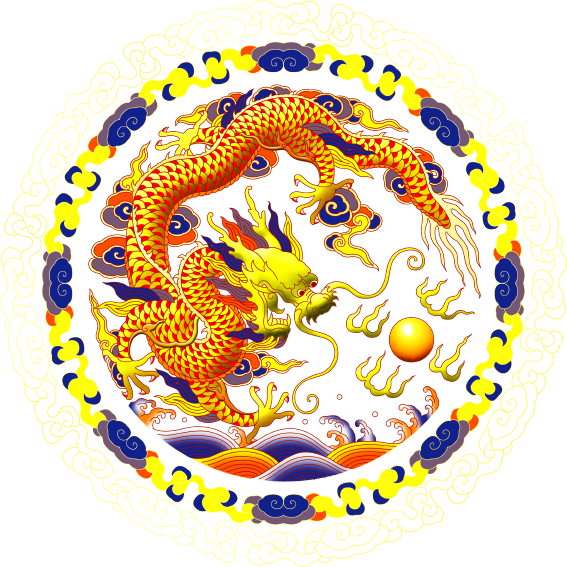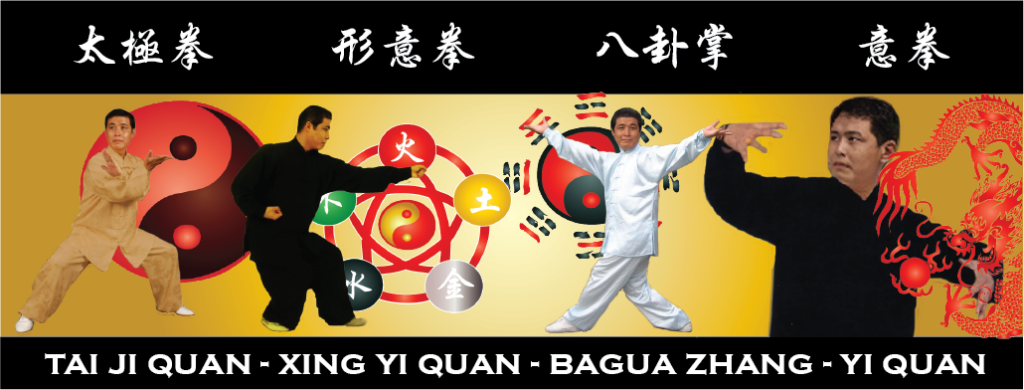
内家拳
(Nei Jia Quan)
Internal Boxing.

袁世凯
General Yuan Shikai
Welcome to the world of martial arts, where ancient wisdom meets modern practice. Explore the origins of our art, rooted in the principles of Nei Jia Quan, or Internal Boxing. Nei Jia Quan, translated as “Internal Boxing,” represents a group of schools unified by their focus on harnessing internal power (qi), explosive strength (fajing), and the principle of using softness to overcome strength. Coined in modern times by General Yuan Shikai (袁世凯), the first president of China in 1912, Nei Jia Quan encompasses disciplines such as Tai Chi, Xingyi Quan, Baguazhang, and more. This term, first appearing in the “Epitaph of Wang Zhengnan” in Huang Zongxi’s “Nanlei Wenban” in 1669, has endured through the centuries to shape the landscape of martial arts today. At Hun Yuan Pai, we proudly carry forward the teachings of Grand Master Li Hong Yi (李鸿仪), whose lineage traces back to the esteemed Ma Xian Feng (马先峰). With deep roots in tradition and a commitment to excellence, our school embraces the rich heritage of Nei Jia Quan while evolving to meet the needs of the modern practitioner. Join us on a journey of discovery, where ancient wisdom and modern practice converge to unlock the full potential of body, mind, and spirit. Experience the power of Nei Jia Quan with Hun Yuan Pai.
Attention Tai Ji Quan, Bagua Zhang, and Xing Yi Quan practitioners!
Prepare to elevate your practice to new heights with our exclusive program that combines not just one, but four styles of internal martial arts. Imagine the thrill of mastering Xing Yi Quan, with its explosive power and direct, linear movements. Feel the flow of Tai Ji Quan as you cultivate balance, flexibility, and inner peace through its graceful, fluid forms. Immerse yourself in the intricate footwork and circular movements of Bagua Zhang, unlocking the secrets of this dynamic and elusive art. And experience the unique energy cultivation and full-body coordination of Yi Quan, harnessing the power of stillness and intention in your practice. With our comprehensive program, you’ll have the opportunity to explore each of these traditional Chinese martial arts in depth, under the guidance of experienced instructors dedicated to helping you reach your full potential.
内家拳实战用法
Real Application of Internal Boxing
The ancient Chinese proverb, “懂得内家拳练法的人很多,懂得打法的人却很少” (“Many people understand the practice of internal martial arts, but few understand how to fight with them”), invites us to reflect on the distinction between theoretical knowledge and practical application in the art of combat. In Chinese culture, it is widely recognized that mastery of form and technique is common, but real martial ability is rare, as indicated by another saying, “花拳锈腿,好看无用” “Elegant fists and embroidered legs, beautiful but useless.” This highlights the importance of not only seeking aesthetic appearance but also effectiveness in combat. Ancient Chinese sayings, such as “一是传统中医学的发展;二是宗教修行尤其是丹道理论的探索;三是传统内家拳的实践” (“The first is the development of traditional Chinese medicine; the second is the exploration of spiritual practice, especially the theory of alchemy; the third is the practice of traditional internal martial arts”), teach us that the path to mastery in internal martial arts is a journey that encompasses multiple aspects of life. However, this does not mean that martial application is less important, but rather that it requires considerable time to develop truly effective combat skills. Hun Yuan Pai School seeks to offer a solution to those who possess martial talent but lack combat experience. Its goal is to capitalize on this knowledge for rapid and effective development. This is crucial to avoid falling into the trap pointed out by the ancient saying, “打拳不练功,到老一场空” “Practicing martial arts, without acquiring real experience, leads to an empty old age,” which reminds us of the importance of cultivating both technical skill and practical experience in the chosen martial art.
The Internal Boxing Curriculum of Hun Yuan Pai School.
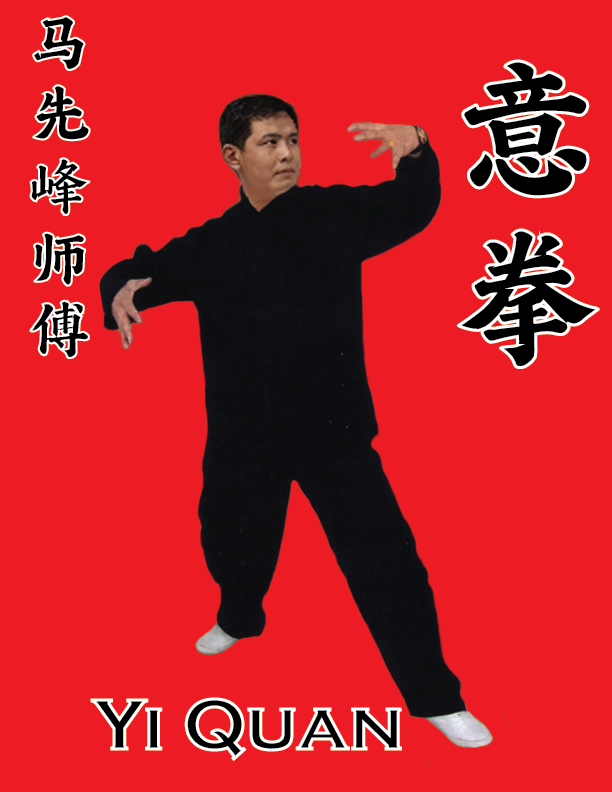
意拳 (Yi Quan) or 大成拳 (Da Cheng Quan)
Discover the transformative power of Yi Quan (意拳) or Da Cheng Quan (大成拳) – a revolution in martial arts that combines tradition and innovation to unlock your full potential. In the 1920s, martial arts visionary Master Wang XiangZhai (王乡斋老师) pioneered Yi Quan by distilling the essence of various styles, including Xing Yi Quan (形意拳). Breaking free from the constraints of rigid forms and sequences, he elevated the concept of “mind-intention” (Yi, 意) to the forefront of training, emphasizing the harmony of mind and body. In Yi Quan, each movement is infused with intention, each posture is a meditation. Through focused visualization and relaxation, practitioners cultivate the harmony of the whole body (Zheng Ti Xie Tiao, 整体谐调) and mind-body synthesis (Quan Shen Fa Xiang He, 全身之法相合), unleashing the full potential of their internal power (Hun Yuan Li, 浑元力). But Yi Quan is more than just physical exercise or mental training, it is a holistic synthesis of both. By integrating mind and body, practitioners access a deep wellspring of strength and vitality, transcending limitations to achieve true martial mastery. Experience the evolution of martial arts with Yi Quan. Join us at Hun Yuan Pai and embark on a journey of self-discovery and empowerment like never before. It’s time for practitioners of internal martial arts to seize the opportunity to learn something truly extraordinary.
History of Yi Quan
The influence of Western boxing on Yi Quan is significant, especially in how the creator of Yi Quan, Master Wang XiangZhai, drew inspiration from the principles of Western boxing to develop this martial art. Master Wang XiangZhai, the founder of Yi Quan, was deeply impressed by the effectiveness and efficiency of Western boxing techniques during his travels in the early 20th century. He recognized the practicality of the direct, linear movements of Western boxing and its emphasis on developing explosive power. Building on these ideas, Master Wang integrated elements of Western boxing into the development of Yi Quan. He incorporated concepts such as footwork, timing, and striking techniques, adapting them to complement the traditional principles of Chinese martial arts present in Yi Quan. Furthermore, Master Wang’s observations about the focus of Western boxing on practical application and real combat situations influenced his approach to martial arts training. He emphasized the importance of simplicity, directness, and effectiveness in Yi Quan, aligning with the pragmatic ethos of Western boxing. Overall, the integration of Western boxing principles into Yi Quan demonstrates Master Wang’s innovative mindset and his willingness to adapt and evolve traditional martial arts in response to modern challenges.
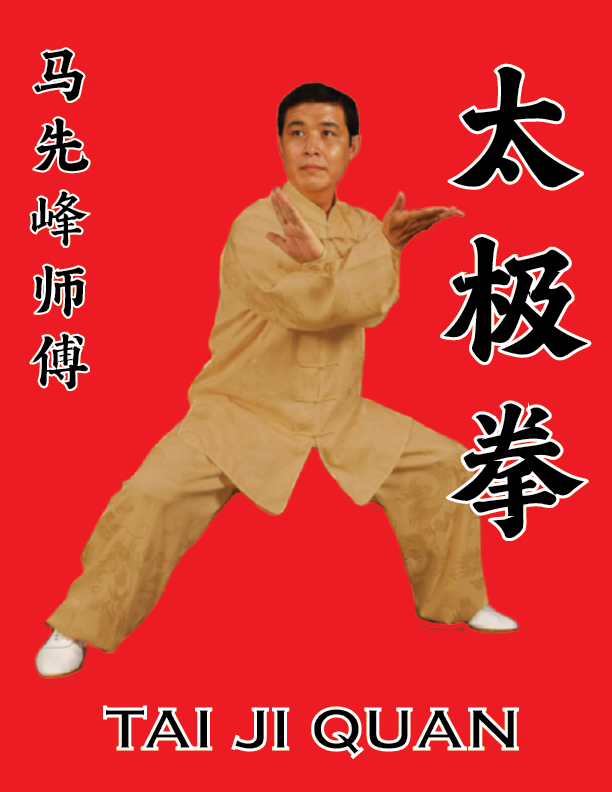
组合杨式和陈式太极拳
The combination of the Yang and Chen styles of Tai Ji Quan
The teaching style of Master Ma Xian Feng is a fusion of the Yang and Chen styles of Tai Ji Quan (组合杨式和陈式太极拳). According to Master Ma Xian Feng, Yang-style Tai Ji Quan offers an elegant and elongated structure, embodying a neutral body with smooth, straight movements that flow effortlessly. It’s like navigating through a serene lake, where lightness meets tranquility. Perfect for non-martial artists or seniors looking to strengthen their bodies, Yang-style Tai Ji Quan emphasizes smooth and graceful movements. On the other hand, Chen-style Tai Ji Quan boasts a dynamic and flexible approach, seamlessly alternating between fast and slow, hard and soft movements. It’s akin to a turbulent river with endless momentum or a dragon playfully swimming in the water. With its generous stance, light yet firm movements, and emphasis on internal power guided by the waist, Chen-style Tai Ji Quan embodies fluidity and power. Each movement is infused with the energy of moving clouds and continuous water, creating a harmonious and lively experience. Whether you prefer the serene elegance of the Yang style or the dynamic power of the Chen style, Tai Ji Quan offers a holistic practice that nurtures both body and mind. Discover the unique benefits of each style and embark on a journey of self-discovery and well-being with Tai Chi. The combat style of Yang-style Tai Ji Quan proposes long displacements, high stances, and deep movements, while the combat style of Chen-style Tai Ji Quan proposes short displacements, low stances, and explosive movements. The combination of both elements provides the opportunity to adapt boxing skills to all types of terrains and circumstances. This combination also allows people of all ages to find benefits in the practice of Tai Ji Quan taught at the Hun Yuan Pai school.
太极拳实战用法
Tai Ji Quan for real combat
Tai Ji Quan, revered for its elegant movements and health benefits, has gained wide popularity as a gentle form of exercise suitable for people of all ages and fitness levels. However, behind its serene facade lies a martial art with deep roots in combat and self-defense. Tai Ji Quan practiced for health and relaxation often omits the true essence of the art, focusing solely on the external appearance of movements without delving into their practical applications. This diluted version fails to convey the profound martial knowledge and skills that Tai Ji Quan embodies. Finding a qualified instructor who can impart the authentic teachings of Tai Ji Quan Chuan can be a daunting task, as true masters are rare and often hidden within traditional lineages. At the Hun Yuan Pai school, we are committed to preserving and transmitting the authentic methods of Tai Ji Quan for combat. Our approach integrates the elegant movements and health benefits of Tai Ji Quan with its practical applications in self-defense. Through dedicated practice, our students learn a variety of techniques including strikes, kicks, joint locks, and takedowns, executed with fluidity and precision. In addition to physical techniques, our curriculum emphasizes mental focus and relaxation, cultivating a calm and centered mind essential for effective self-defense. Through disciplined practice, our students develop the ability to maintain a clear and focused head under pressure, making split-second decisions with confidence and poise. Ultimately, Tai Ji Quan offers a holistic approach to self-defense, integrating physical techniques with mental and spiritual development. While mastering the art requires dedication and perseverance, the rewards in terms of physical health, mental clarity, and self-defense skills are deep and transformative. Join us at Hun Yuan Pai and embark on a journey of self-discovery and empowerment through the ancient art of Tai Ji Quan.
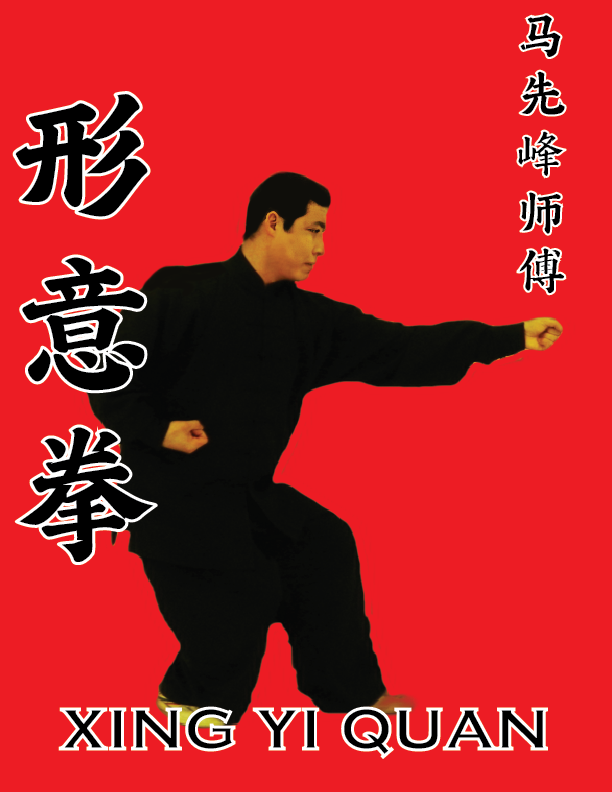
混元派的形意拳
The Xing Yi Quan of the Hun Yuan Pai School
According to Master Ma Xian Feng, Xingyiquan embodies a unique combination of characteristics that make it an exceptional martial art. Its movements are described as simple yet strict and compact, offering practitioners a blend of softness and explosiveness that sets it apart. In Xing Yi Quan classes, we adopt a dynamic and strategic approach to both attack and defense. Our philosophy is simple yet profound: “Advance when opportunity arises, retreat when necessary, but always maintain readiness.” We believe in the power of adaptability, seamlessly combining offensive and defensive principles to overcome any challenge. Our training focuses on the integration of theory and practice, cultivating a deep understanding of combat dynamics and enhancing the ability to anticipate and respond to opponent’s movements.
形意拳脱枪成拳
Xing Yi Quan Boxing Technique Derived from Spear Handling
In Xing Yi Quan, the boxing technique is derived from spear handling. At the Hun Yuan Pai School, we emphasize the integration of spear techniques with fist techniques simultaneously. A deep understanding of Xing Yi Quan requires experiencing spear handling simultaneously. In ancient times, soldiers were not taught boxing techniques; they first learned spear handling. Xing Yi Quan originated in an era when it was common for people to possess, carry, and frequently use weapons such as sabers, spears, and swords. Much later, boxing movements were developed based on spear and sword techniques. Spear usage is based on 24 steps and five fundamental movements known as the Five Elements Fists (五行拳). The metal element is expressed in the spear splitting movement (劈枪), from which the splitting fist (劈拳) is derived. The water element is expressed in the spear drilling movement (鑽枪), from which the drilling fist (鑽拳) is derived. The wood element is expressed in the spear crashing movement (崩枪), from which the crashing fist (崩拳) is derived. The fire element is expressed in the cannon shooting spear movement, from which the cannon spear (炮枪) and cannon fist (炮拳) are derived. The earth element is expressed in the horizontal thrusting spear movement (橫枪), from which the horizontal fist (橫拳) is derived. In Hun Yuan Pai, we honor this rich tradition by teaching the interconnection of spear and fist techniques. Through our comprehensive training approach, students not only develop formidable boxing skills but also gain a profound understanding of the historical and cultural significance of Xing Yi Quan. Join us and embark on a journey of mastery where the ancient art of spear handling enriches your boxing practice, empowering you with a deeper connection to the tradition of martial arts.
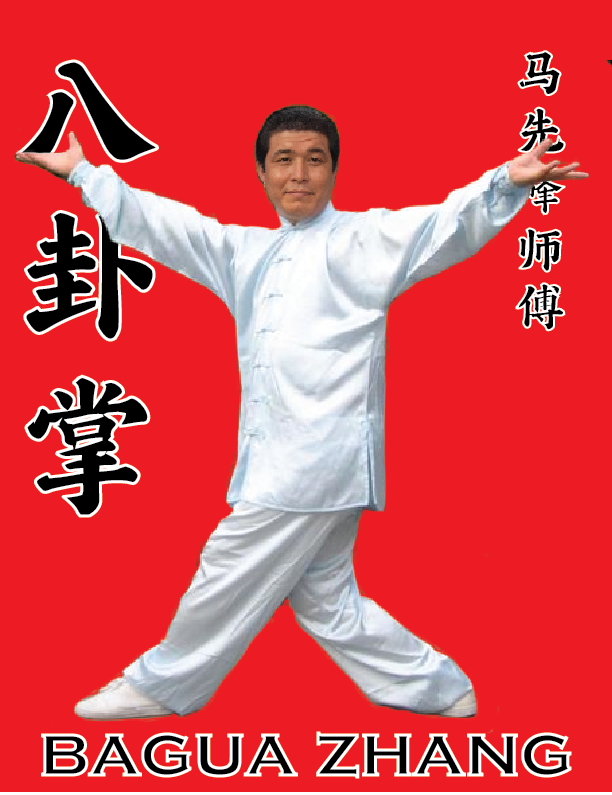
混元派的八卦掌
Bagua Zhang of the Hun Yuan Pai School
The art of the Eight Trigrams Boxing reveals itself as a cunning and deceptive fighting form. In the practice of Bagua Zhang, we emphasize the concept of “Three Forms, Three Energies.” The “Three Forms” refer to moving like a dragon, spinning like a monkey, and changing postures like an eagle. Meanwhile, the “Three Energies” involve stepping as if through mud, hands twisting like ropes, and rotating as if grinding rice. These principles allow for versatile palm techniques, a solid waist axis, agile foot movements, harmonious body movement, and integration of intention guiding Qi, Qi guiding force, sinking Qi into the dantian, solid sunk energy, and the harmonious balance between firmness and flexibility, internal and external unity. Once mastery is attained, Bagua Zhang practitioners can advance diagonally, to the left or right with palms following body movements, steps adapting to palm changes, and the body responding to changes in intention. Movements vary from high to low, fast to slow, and from hidden to revealed, resembling the swift flight of a hawk through the forest or the elusive movement of a dragon in the sea. Thus, the striking characteristics of Bagua Zhang include infinite mysteries in technique. Emphasis on palm techniques and foot movements. Agile angles, body evasions, and shadow changes. Integration of firmness and flexibility, yielding to hardness. Blending of visible and hidden leg techniques, exchange of seven fists. Intention as commander, eyes as vanguard. Unification of the six harmonies leading to bold success. Essence of attack and defense, all encompassed within. Baguazhang offers a wide range of forms, including individual practice, sparring, and full-contact. According to ancient boxing records, the Baguazhang system still has seventy-two hidden kicks and seventy-two leg interceptions. In addition to close combat, Baguazhang encompasses a wide variety of weapons such as knives, spears, swords, and halberds. Its training method reflects the adaptability and versatility of the practitioner, emphasizing smooth movement with the weapon and seamless connection with the situation at hand. Additionally, Baguazhang includes the use of unique short double instruments such as mandarin ducks, chicken claws, hot wheels, and judge’s pens, making it distinctive from other martial arts styles.
“Unlock Your Potential! Free Month of Classes at Hun Yuan Pai”
Attention to all those interested in learning and training physical, philosophical, and spiritual disciplines to improve their physical and mental well-being! Hun Yuan Pai School is excited to offer a full month of free classes for you to experience everything we have to offer. During this trial month, you’ll have unlimited access to all our activities, from Tai Chi and Qi Gong to self-defense classes and meditation. Our experienced instructors will be there to guide you every step of the way, helping you explore and master these ancient Chinese disciplines. Take advantage of this unique opportunity to discover the benefits of training in physical, philosophical, and spiritual disciplines and how they can transform your life. After the free month of classes, each class has a cost of $10. However, we want to make sure you have the chance to experience everything we offer before committing financially. Therefore, we encourage you to make the most of your free month of classes and discover the path to greater health, vitality, and inner peace. It’s important to note that at Hun Yuan Pai School, we do not require you to sign long-term contracts. You simply pay for each class you take, giving you flexibility and freedom to tailor your schedule to your needs and commitments. Don’t miss this opportunity to start your journey towards a better self! Join Hun Yuan Pai School today and discover everything internal martial arts have to offer. We welcome you with open arms to help you reach your wellness and personal development goals.
